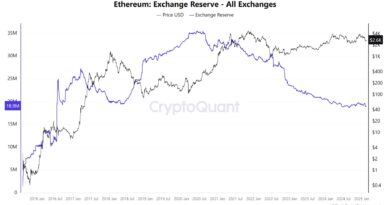The Allure of the Premarket Plunge | by Dmitry Korotnian | The Capital | Feb, 2025

On the morning of February 5, 2025, traders awoke to a tantalizing sight: Alphabet (GOOGL) shares had tumbled 7% in premarket trading, Apple (AAPL) was down 2%, and Advanced Micro Devices (AMD) had slid 9%. The knee-jerk reaction? Seize the opportunity to profit from the downturn. But as with many things in trading, the obvious play is often a siren’s call leading to peril.
Strategy 1: Shorting the Stocks – Playing Chicken with a Freight Train
At first glance, shorting these declining stocks seems like a no-brainer. However, jumping into a short position amid such significant premarket gaps is akin to playing chicken with a speeding freight train.
- The Reversal Risk: Markets are notorious for overreacting to news, especially during premarket hours when liquidity is thin. Shorting a stock after a substantial gap down exposes traders to the risk of a sharp reversal once the regular trading session begins and more participants enter the market. It’s not uncommon for stocks to recover a portion of their losses as initial panic subsides.
- The Squeeze Scenario: If the stock begins to rebound, short sellers may rush to cover their positions, fueling further upward momentum—a phenomenon known as a short squeeze. This can lead to rapid and substantial losses for those caught on the wrong side.
Strategy 2: Buying Put Options – The Mirage of Protection
For those wary of the risks of outright shorting, purchasing put options appears to be a safer bet. After all, they provide the right to sell at a predetermined price, profiting from further declines. But in the wake of significant stock drops, this strategy can be fraught with pitfalls.
- The Implied Volatility Trap: Following major news events, implied volatility (IV) of options often spikes as traders anticipate further movement. This surge in IV inflates the premiums of put options, making them expensive to purchase. Even if the stock continues to decline, a subsequent decrease in IV—a phenomenon known as „volatility crush“—can erode the value of the put option. In some cases, the option may lose value despite the stock moving in the anticipated direction.
- The Greek Gambit: Options pricing is influenced by various factors, collectively known as the „Greeks.“ A spike in IV affects these Greeks, particularly vega (sensitivity to volatility) and theta (time decay). An inflated IV increases vega, meaning the option’s price is more sensitive to changes in volatility. As IV normalizes, the option’s value can decrease rapidly, and the accelerated time decay (theta) further diminishes its worth.
Strategy 3: Selling Call Options Naked – Dancing on a Live Wire
For the truly audacious (or reckless), selling call options without owning the underlying stock—known as „naked“ calls—might seem like a lucrative strategy in a declining market. However, this approach is tantamount to dancing on a live wire.
- Unlimited Loss Potential: Unlike other strategies, selling naked calls exposes traders to theoretically unlimited losses. If the stock reverses and surges upward, the losses can be catastrophic, far exceeding the initial premium received.
- Margin Calls and Liquidation: A significant adverse movement can trigger margin calls, forcing traders to deposit additional funds or face the liquidation of their positions at unfavorable prices. This not only results in financial loss but can also erode trading capital to unsustainable levels.
- The Reality Check: Market Dynamics and the Retail Trader’s Dilemma. In the aftermath of substantial premarket moves, the opening bell often brings a flurry of activity. Institutional investors, equipped with sophisticated algorithms and vast resources, capitalize on the volatility, often leading to rapid price reversals or stabilization.
- The Whipsaw Effect: Retail traders attempting to implement the aforementioned strategies may find themselves „whipsawed“—entering positions just as the market moves against them. The initial gap down may be followed by a swift recovery, leading to losses for those who shorted or bought expensive puts.
- The Discipline Divide: It’s not that institutional players are inherently more astute; rather, they adhere to disciplined strategies, risk management protocols, and possess the patience to wait for optimal entry points. Retail traders, driven by emotion and the allure of quick profits, often lack this discipline, leading to costly mistakes.
The Illusion of the Obvious Play
While the temptation to capitalize on significant premarket declines is strong, the common strategies employed by retail traders—shorting the stock, buying put options, or selling naked calls—are fraught with risk and often lead to unfavorable outcomes. Markets are complex ecosystems where the apparent „obvious“ play is frequently a trap. Success requires not only a sound strategy but also an understanding of market mechanics, disciplined risk management, and the humility to recognize the limitations of one’s knowledge.
In the end, while the allure of quick profits is enticing, the disciplined trader understands that sometimes the best action is inaction—waiting for clearer signals and avoiding the pitfalls of reactive decision-making.



